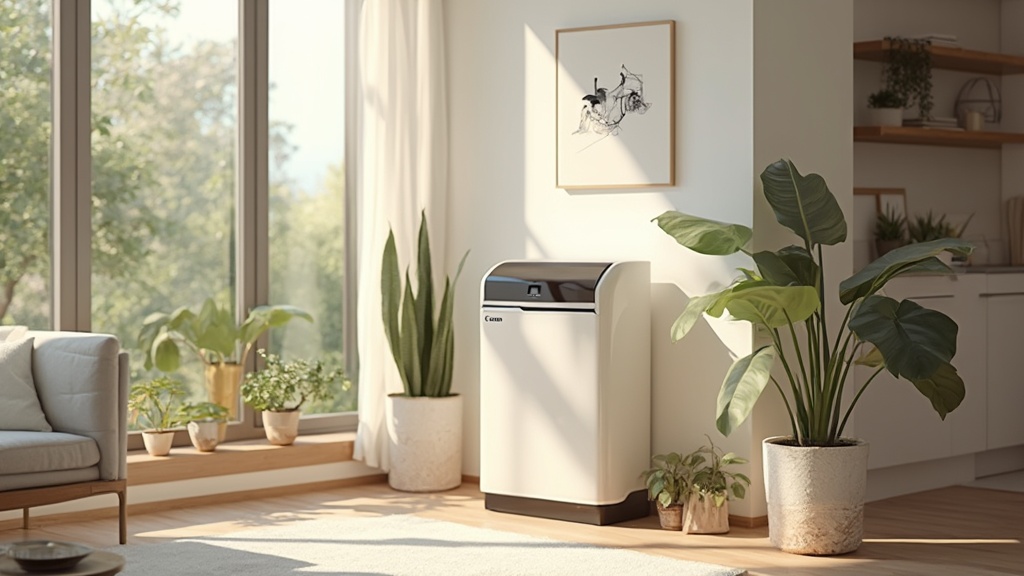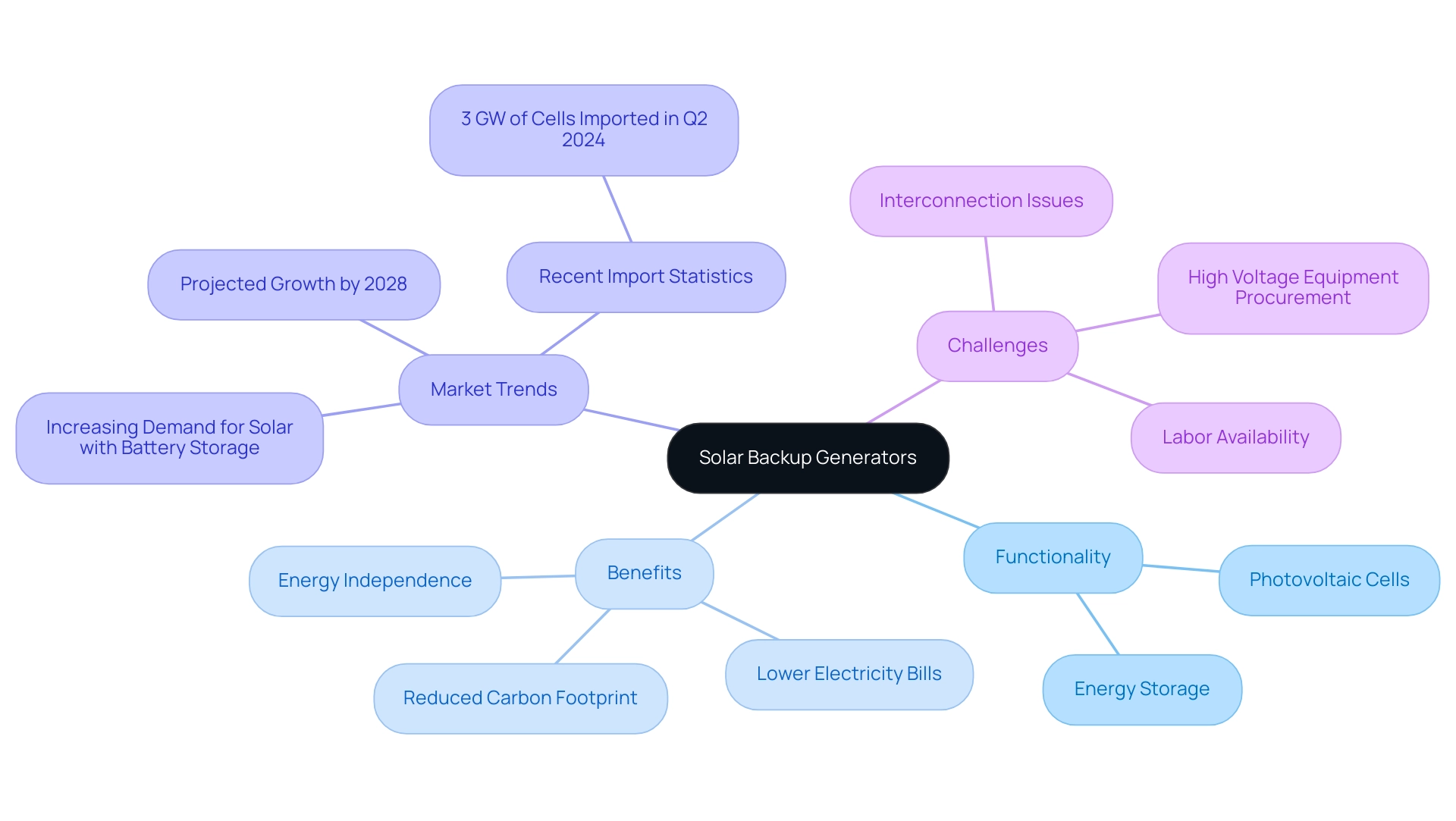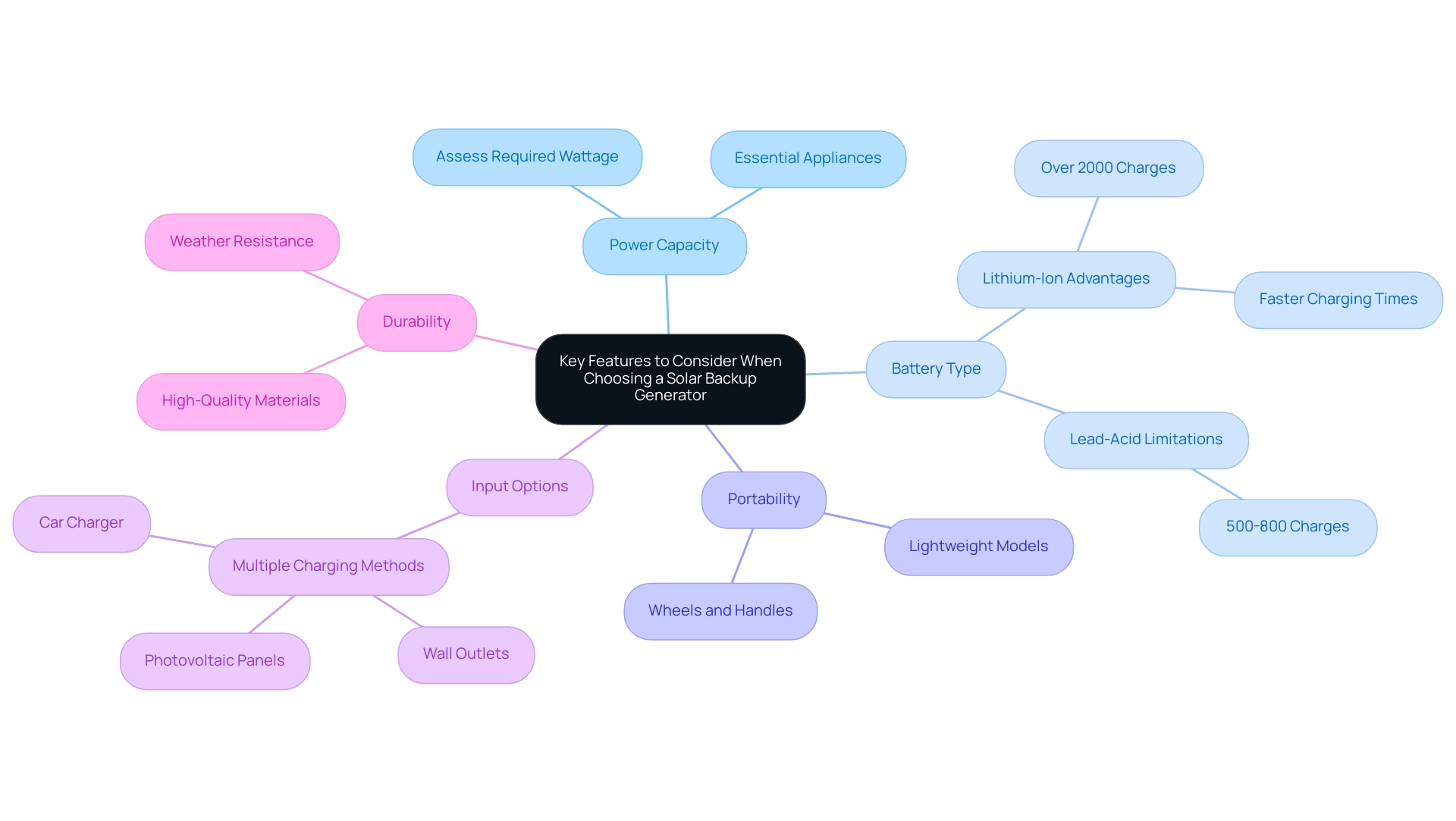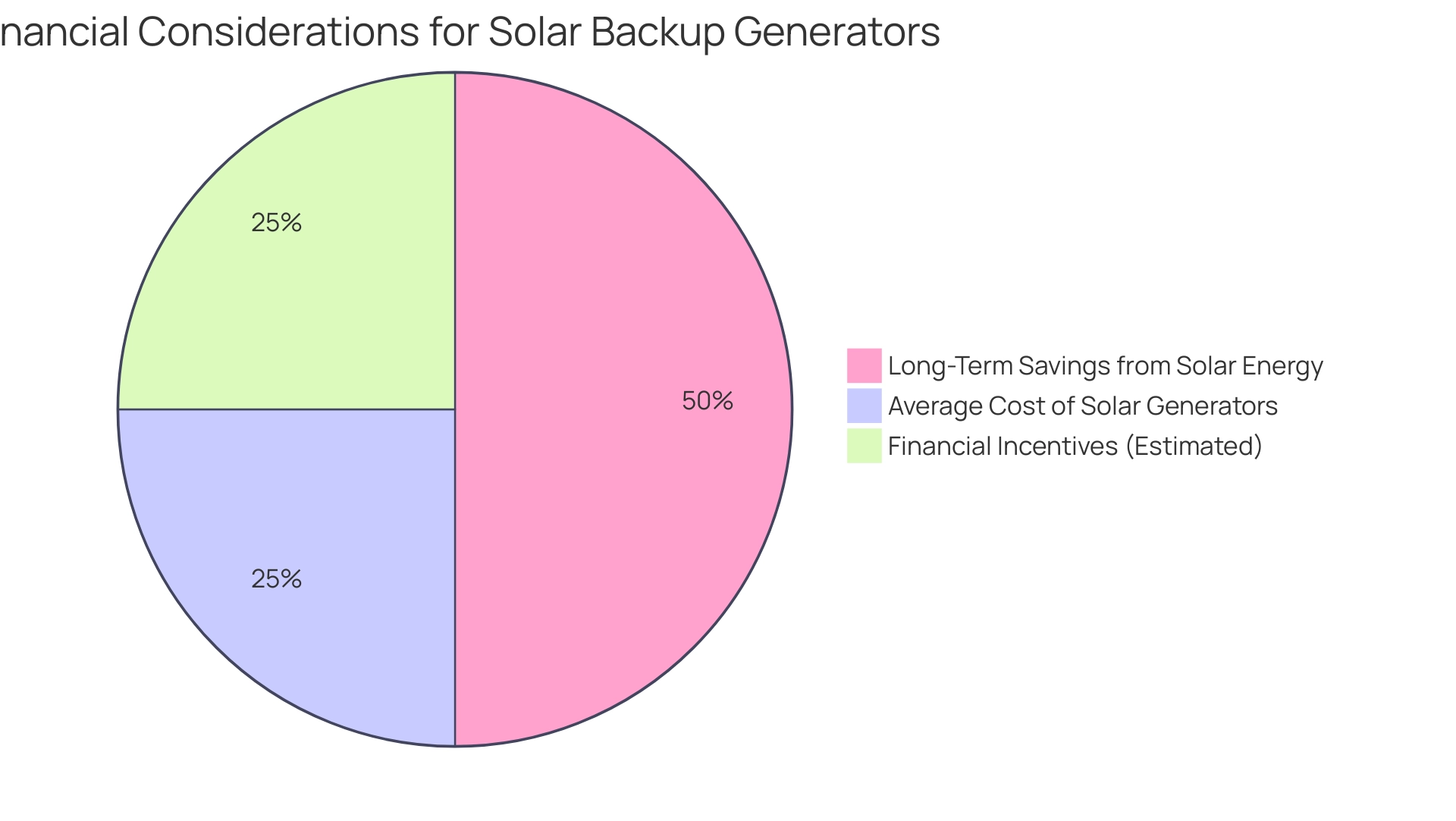Overview
The article focuses on comparing top brands and models of solar backup generators to help consumers choose the right one for their needs. It highlights key features such as power capacity, battery type, and portability while providing insights into various models like Goal Zero, Jackery, and Bluetti, emphasizing the importance of selecting a generator that aligns with individual energy requirements and lifestyle preferences.
Introduction
In an age where energy independence and sustainability are becoming increasingly vital, solar backup generators are emerging as a key solution for homeowners. These innovative systems not only provide a reliable power source during outages but also allow families to harness the sun’s energy, reducing their reliance on the grid. As the demand for eco-friendly energy solutions grows, understanding the functionality and benefits of solar backup generators becomes essential.
From exploring the best brands and models to considering crucial features and cost implications, navigating the world of solar energy can be both exciting and overwhelming. This article aims to guide homeowners through the essentials of solar backup generators, ensuring they can make informed decisions that enhance their energy resilience while contributing to a greener future.
Understanding Solar Backup Generators: Functionality and Benefits
Solar backup generators are an essential ally for environmentally aware residents seeking to maintain power during outages, especially when using a generator for solar backup. These groundbreaking systems capture power from sunlight collectors, effectively transforming light into electricity that can be stored in batteries for future use. This means when the grid goes down, your essential appliances and systems can keep running smoothly, ensuring peace of mind.
One of the standout benefits is the significant reduction in reliance on the grid, leading to lower electricity bills and a smaller carbon footprint. As Ben Zientara, a policy analyst for renewable energy, points out, integrating photovoltaic energy into home systems fosters energy independence and resilience, empowering homeowners to navigate emergencies confidently. “Transitioning to renewable energy has not only lowered my bills but also provides me peace of mind during outages,” shares a satisfied Powercore Electric customer.
With increasing demand for solar systems paired with battery storage—especially as projections indicate that by 2028, 28% of new distributed solar capacity will include storage—the generator for solar backup represents not just a trend, but a fundamental shift towards sustainable living. This increasing adoption reflects a broader desire for autonomy and the assurance that comes from having a dependable, eco-friendly power source at your fingertips. Powercore Electric’s local expertise guarantees that installations address the unique requirements of California communities, while their dedication to unparalleled quality craftsmanship and customer-first service aids in facilitating your transition to sustainable power solutions.
Furthermore, grasping how photovoltaic panels function is essential; they transform sunlight into electricity via photovoltaic cells, enabling residents to utilize renewable energy efficiently. The U.S. brought in over 3 GW of cells in Q2 2024, representing the fourth consecutive quarter of growth in the energy market. However, challenges such as interconnection, high voltage power equipment procurement, and labor availability continue to pose significant headwinds to faster growth in this sector.
By utilizing governmental renewable energy initiatives, residents can gain additional advantages from these advancements while aiding in a sustainable future.
Comparative Analysis of Leading Solar Generator Brands and Models
When exploring the realm of generators for solar backup, several brands consistently attract the attention of eco-conscious homeowners, especially those interested in comprehensive energy solutions.
Goal Zero Yeti 3000X: This standout model is celebrated for its portability and powerful output, making it a top choice for off-grid living and emergency situations. It boasts a variety of output options—AC, USB, and 12V ports—catering to all your device needs.
While its premium price reflects its quality, it may not fit every budget. Moreover, as the market for photovoltaic technology expands, with 85% of installers utilizing NREL’s SolarAPP+ permitting software stating it makes permitting significantly easier, the accessibility of energy solutions continues to improve. Tesla home chargers, priced around $500 to $700, can complement this by ensuring your electric vehicle is charged efficiently with renewable energy.
Jackery Explorer 1500: A preferred choice for residents, this device achieves an excellent balance between power and cost-effectiveness. With a capacity of 1534Wh, it can efficiently run essential appliances during outages. Its lightweight design and user-friendly interface make it incredibly accessible for everyday use.
The rising demand for a generator for solar backup is reflected in the U.S. importing renewable energy equipment valued at over $4.6 billion in 2023, indicating a strong market where property owners can also access government programs for financial aid.
Bluetti AC200P: Designed for larger households, this model offers a hefty 2000Wh capacity, ensuring ample power during blackouts. It includes an impressive range of ports and supports sunlight charging, which enhances its versatility.
However, its size might be a consideration for those with limited space. As property owners assess their choices, considering panel functionality can enhance the advantages of such systems. Furthermore, property owners should be aware of the advantages and disadvantages of photovoltaic shingles, which can offer aesthetic charm but may involve increased installation expenses and complexity.
EcoFlow Delta 1300: Known for its rapid charging capabilities, this device delivers high output with a capacity of 1260Wh. Its compact design makes it easy to transport and store, which is a significant advantage for homeowners with limited space.
In addition to the power sources, homeowners should consider panel cleaning services to maintain efficiency and prolong the lifespan of their systems. Many companies provide specialized cleaning that can improve panel output, ensuring maximum energy production.
Ultimately, each brand presents its unique advantages and disadvantages, catering to a variety of consumer needs. Homeowners should consider elements such as power capacity, portability, and cost to identify the generator for solar backup that most effectively meets their particular needs. As consumer demand for dependable energy solutions continues to rise, incorporating real-world feedback and expert insights can further guide homeowners in their choices.
Key Features to Consider When Choosing a Solar Backup Generator
When selecting a solar backup device, it’s essential to concentrate on a few key features to ensure you find the perfect fit for your home:
- Power Capacity: Start by assessing how much power you’ll need. Consider the appliances you wish to keep operating during an outage and search for power sources that can handle the wattage required by those essential devices. This will help you maintain comfort and security during unexpected interruptions.
- Battery Type: Lean towards lithium-ion batteries, which are noted for their impressive efficiency. Industry experts highlight that these batteries can exceed 2,000 charges compared to just 500-800 for traditional lead-acid options. With their longevity and faster charging times, lithium-ion batteries represent a smarter long-term investment for energy independence.
- Portability: If you envision taking your device camping or using it for off-grid adventures, portability becomes key. Look for models that are lightweight or come equipped with wheels and handles, making transportation easy and convenient.
- Input Options: Versatility is vital, so ensure your generator offers multiple charging options. Being able to charge via photovoltaic panels, wall outlets, and even your car charger means you won’t be left in a tight spot, no matter where you are. This flexibility is especially valuable as more homeowners adopt solutions like a generator for solar backup.
- Durability: Since you might use your device outdoors, opting for models made from high-quality materials that can withstand various weather conditions is essential. This durability aspect is particularly crucial for regular users, guaranteeing your investment endures.
Recent trends show an increasing demand for generators for solar backup powered by sunlight, with over $4.6 billion worth of such equipment brought into the U.S. in 2023. This highlights a growing interest in off-grid power solutions. By concentrating on these characteristics and taking into account insights from industry experts, you can make knowledgeable selections that not only satisfy your power requirements but also integrate smoothly into your eco-friendly lifestyle.
For a more thorough understanding of how photovoltaic panels operate and to examine specific product comparisons, refer to user manuals and guides accessible online. These resources can offer comprehensive insights into the operation of photovoltaic systems and assist you in making more informed choices about your autonomy.
Installation and Maintenance of Solar Backup Generators
Installing a generator for solar backup can be a fulfilling project that improves your home’s power resilience, particularly as the US renewable industry is expected to set up 40.5 GW in 2024. This growth underscores the rising importance of solar energy options, including a generator for solar backup systems, in achieving energy independence and protecting against blackouts. Here’s a friendly guide to help you through the process:
-
Site Assessment: Start by evaluating the location for your power source. Look for a spot that gets plenty of sunlight and is free from obstructions like trees or buildings that could cast shadows.
-
Mounting the Device: Once you’ve chosen the perfect spot, securely mount your equipment according to the manufacturer’s instructions.
Ensure it’s stable and protected from the weather; a little preparation here goes a long way!
-
Linking Photovoltaic Panels: If you’re utilizing photovoltaic panels, attach them to the power source. Follow the guidelines closely to ensure everything works harmoniously and efficiently.
Comprehending how photovoltaic panels operate, as described in your user manual, will assist you in maximizing their benefits.
-
Testing the System: After installation, it’s time for a test run! Verify that the power source functions as intended and that it can charge effectively.
It’s important to recognize that while the renewable energy sector is expanding, expected growth may stay stagnant over the next five years because of challenges such as labor shortages and equipment limitations. This reality is something homeowners should consider when planning their installations.
As for maintenance, keeping an eye on your battery and connections is essential for optimal performance. Consistently maintaining your energy panels and the unit’s exterior can greatly enhance efficiency.
Don’t forget to consult your user manual for specific maintenance recommendations tailored to your device, ensuring it serves you well for years to come. By adopting these practices, you’ll extend the lifespan of your generator for solar backup and improve your power independence. Additionally, comprehending the best battery options is essential for efficient power storage.
Services that enable the storage of renewable electricity can significantly contribute to your energy independence and provide protection against blackouts. Recent trends in the community energy segment, such as the 291 MW installed in Q3 2024, reflect mixed results and regional disparities in growth, which can inform your expectations and planning for installations.
Cost Considerations and Financial Incentives for Solar Backup Generators
When it comes to a generator for solar backup, costs can vary significantly depending on the brand, capacity, and features you choose. On average, you’re looking at spending between $500 and $3,000 for a quality unit. While that initial investment might appear high, keep in mind the long-term savings on your electricity bills—averaging around $5,916 over 25 years in areas like Wyoming—and the added advantage of independence.
Imagine having reliable power during an outage; it can truly transform your peace of mind!
Additionally, many states, including California, are enhancing support for homeowners making the switch to renewable energy through appealing financial incentives like tax credits, rebates, or grants. For instance, the California Solar Initiative aims to assist in reducing installation expenses, facilitating access for Long Beach renters to eco-friendly power solutions. Furthermore, programs like the Federal Solar Tax Credit can significantly reduce the upfront costs of installations.
When considering a generator for solar backup, explore reputable brands such as:
- Jackery
- Anker
- Goal Zero
- Bluetti
- EcoFlow
Each catering to different needs and preferences. For those interested in electric vehicles, integrating Tesla home chargers can provide seamless charging solutions at home, enhancing your overall energy efficiency. And don’t forget to take advantage of local incentives—discussing with installation specialists can help you maximize your savings and make informed choices that benefit both your home and the planet.
Regular cleaning services for your panels can also ensure optimal performance and longevity.
Ready to make the switch to renewable energy? Reach out to Powercore Electric today for your complimentary, tailored estimate and explore what solar power can achieve for you! Embrace energy independence, achieve financial savings, and contribute to a brighter, more sustainable future.
Conclusion
Investing in a solar backup generator is a proactive step towards achieving energy independence and sustainability. These systems not only provide reliable power during outages but also help reduce reliance on traditional energy sources, ultimately leading to lower electricity bills and a smaller carbon footprint. By understanding the functionality, benefits, and key features of various solar backup generators, homeowners can make informed choices that align with their energy needs and lifestyle.
As explored throughout the article, selecting the right generator involves considering factors such as:
- Power capacity
- Battery type
- Portability
With an increasing number of brands offering innovative solutions, there’s a model to fit every household’s requirements. Additionally, the importance of proper installation and maintenance cannot be overstated, as these practices ensure that your investment continues to perform optimally for years to come.
Moreover, the financial incentives available for solar energy systems can significantly offset initial costs, making the transition to solar more accessible than ever. Embracing these eco-friendly solutions not only empowers homeowners to navigate power outages with confidence but also contributes to a collective effort towards a greener future. The time to explore solar backup generators is now—take the leap and enjoy the peace of mind that comes with energy resilience and sustainability.







